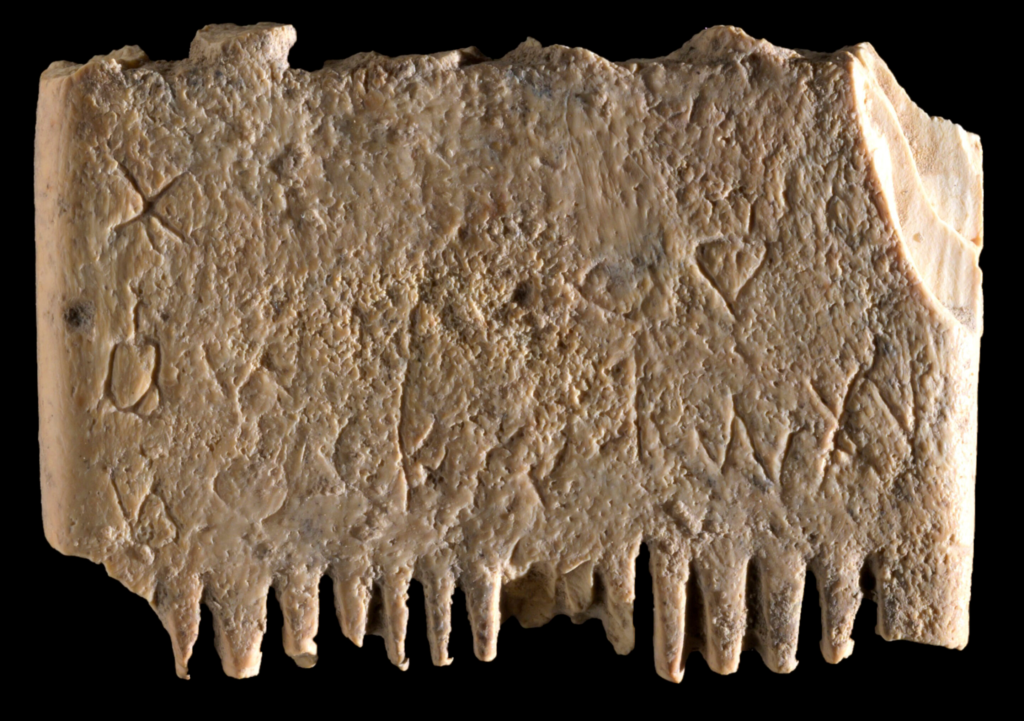5,000 years old fridge along with food found by archaeologists
The recent discovery of a 5,000-year-old refrigerator and food found by archaeologists has been a source of much surprise and interest. The ancient refrigerator was unearthed in an archaeological dig in the city of Kütahya, Turkey, in 2019. The ancient refrigerator is made of a clay pot and is thought to be the earliest known example of refrigeration technology. The pot is filled with a mixture of water and salt, which creates a lower temperature than the surrounding environment and helps keep food cool. The archaeological team also discovered food remains inside the pot, including a type of yogurt and cheese made from sheep or goat’s milk. This suggests that the ancient people who used this refrigerator were already familiar with the process of preserving food through refrigeration. This discovery provides insight into the knowledge and technology of ancient civilizations.

While the ancient Egyptians and Mesopotamians are known for their advanced technology and engineering feats, this find proves that even earlier civilizations were capable of using technology to preserve food. The find also shows that refrigeration technology was used in parts of the world other than Egypt and Mesopotamia. This suggests that the technology was likely developed independently in different parts of the world, and that it was likely in use for a long period of time before it was adopted by the ancient Egyptians and Mesopotamians. The 5,000-year-old refrigerator and food found by archaeologists is a remarkable find that sheds light on the technological capabilities of ancient civilizations. It demonstrates that even early humans were capable of using technology to preserve food and that the technology was likely in use for a long period of time before it was adopted by the ancient Egyptians and Mesopotamians. This discovery provides valuable insight into the history of refrigeration and the knowledge of ancient peoples.
Archaeologists Unearth Ancient Buddha Statue in Egypt
Archaeologists have recently unearthed a stunning ancient Buddha statue in Egypt, believed to have been carved in the 5th century AD. The statue is made of limestone, and stands at a height of 1.2 meters (3.9 feet). It is thought to have been carved during the reign of the Byzantine Emperor Anastasius I (491-518 AD). The statue was discovered in the Kom el-Nana archaeological site, located in the ancient city of Alexandria. The area is known to have been a major hub for Buddhist pilgrims in the late Roman period. According to archaeologists, the statue was discovered in the remains of a former monastery. The statue depicts a seated Buddha with his hands in a meditative posture. He is wearing a thin robe, and his head and face are adorned with a traditional crown.

His eyes are closed in a peaceful expression. The statue also features intricate carvings on the robe and other details, as well as a small inscription in Greek on the base. The discovery of this statue is significant because it is one of the earliest known representations of the Buddha in Egypt. It is also the first time that a representation of the Buddha has been found in the Mediterranean region. The statue provides valuable insight into the spread of Buddhism in the region during the late Roman period. The statue is currently in the hands of the Egyptian Ministry of Antiquities, and is being preserved and studied. It is hoped that further research and analysis will reveal more about the history of Buddhism in Egypt, as well as the artist who created this beautiful piece of art. The discovery of this ancient Buddha statue is an exciting and important addition to our understanding of the spread of Buddhism in the ancient Mediterranean. It is a reminder of the power of art and religion to transcend boundaries, and to connect people across time and space.
Israel archaeologists find ancient comb with ‘full sentence’
Archaeologists in Israel recently unearthed a 3,200-year-old comb that contained a full sentence written in ancient Hebrew. The comb was discovered at Tel Michal, a site located in the modern-day city of Ashdod, which was an important city-state in the ancient kingdom of Judah. The comb, which is made of bone, was found among a hoard of other artifacts that date back to the Iron Age. The comb was decorated with a relief of two winged sphinxes facing each other, which is a common symbol in ancient Near Eastern art. The sphinxes were flanked by two lines of ancient Hebrew writing. The writing consists of four words, which together form a full sentence: “My daughter shall not marry.” The discovery of the comb is significant because it is the first known example of an ancient Hebrew inscription written on an artifact. It is also the earliest known example of a full sentence written in ancient Hebrew.

The inscription is thought to be a message to the owner of the comb, either a father or a mother, warning them not to let their daughter marry. The inscription is written in proto-Canaanite script, an early form of Hebrew writing that evolved into the modern Hebrew alphabet. It is thought to date back to the 11th century BCE and is the oldest known example of proto-Canaanite writing. The comb is an important archaeological discovery because it provides insight into the daily lives of the ancient Israelites. It suggests that the people of the time were literate and capable of expressing themselves in writing. It also reveals that the society of the time was patriarchal and that parents had control over their children’s marriages. The comb serves as a reminder of the long and rich history of the region. It is a tangible reminder of the vibrant and diverse culture of the ancient Near East, and it serves as a reminder of the importance of preserving the region’s archaeological heritage.
Archaeologists in Egypt unearth Sphinx-like Roman-era statue
Archaeologists in Egypt have recently unearthed a striking, sphinx-like, Roman-era statue in the ancient city of Heliopolis. The statue, which stands over four meters tall, is thought to have been created in the 3rd century A.D. and may have been used as a monument to a local ruler. The sphinx-like statue features a human head and body, sitting atop a lion’s body, which is typical of the type of statuary found in the Roman period. It is adorned with a crown, which is thought to represent the power of the ruler it was created to honor. The statue also features a cobra on its forehead, which is believed to be a representation of the goddess Wadjet. The statue was discovered during an excavation on the site of the Temple of the Sun, and was found in an area of the temple believed to have been used for rituals. The archaeologists believe that the statue may have been part of a larger sculpture, though it is unclear what the other parts may have been.

The statue is made from limestone, which was a common material used in ancient Egypt for statuary and other works of art. The material has been well-preserved over the centuries, and the details of the figure are still clear. The archaeologists believe that this piece is a unique and important example of Roman art in Egypt. The statue is a reminder of the long and vibrant history of Egypt, and its importance in the ancient world. It is further evidence of the strong influence of the Romans in the region, and its artisans’ ability to create intricate works of art from such a durable material. This statue will help to further our understanding of the ancient world and the cultural exchange that occurred between Egypt and Rome. The discovery of this sphinx-like statue is an exciting one, and it is sure to be a valuable addition to the archaeological record. It is further evidence of the importance of Egypt in the ancient world, and of the lasting influence of the Roman Empire.
7500-year-old Cursed City of Iran
The city of Tepe Yahya, located in the Kerman province of southeastern Iran, is one of the oldest known settlements in the area, estimated to be around 7500 years old. This ancient city is called the cursed city due to its long and turbulent history. The city was first inhabited by the Elamites, an ancient civilization who were renowned for their advanced metalworking skills. During the Sassanid era, the city was largely abandoned and fell into disrepair. It was later conquered by the Arabs, who built a fort to guard the city. The city remained under Arab control until the 10th century, when it was conquered by the Seljuk Turks. The city once again fell into disrepair during the Mongol invasions of the 13th century. It was then conquered by the Safavids in the 16th century, who fortified the city and renamed it Tepe Yahya.

The city was then abandoned once again in the 17th century, and it remained abandoned until the 19th century when it was repopulated by nomadic tribes. The city has since remained relatively isolated and untouched, and its inhabitants have become known as the cursed people of Tepe Yahya. The city is surrounded by a mysterious curse, which is said to have caused the death of many of its inhabitants over the years. It is also said that the city has been plagued by bad luck, with many of its inhabitants suffering from mysterious illnesses and diseases. The city is now a popular tourist destination, and its mysterious history and eerie atmosphere make it a fascinating place to visit. Despite its long history of abandonment and neglect, Tepe Yahya has managed to survive and remain largely intact. It is a testament to the resilience of humanity, and the power of the curse that still lingers in the city.